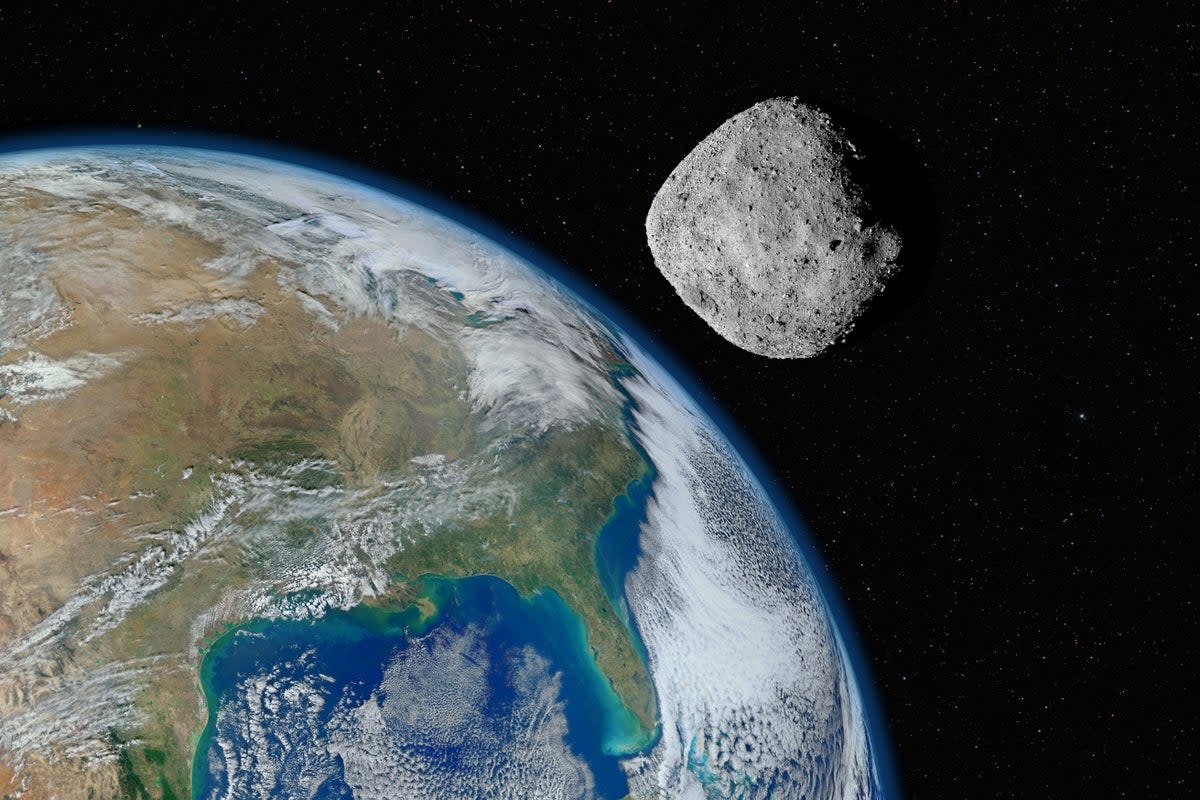Building-sized asteroid to buzz by Earth on Halloween — weeks after astronomers first spotted it

A newly discovered building-sized asteroid will fly near Earth on Halloween, passing as close as about six times the distance from the Earth to the Moon.
Asteroid 2022 RM4 is an estimated 1,083 to 2,428 feet in diameter — just shy of the height of the 2,716-foot-tall (828 m) Burj Khalifa skyscraper — and will pass within 1.43 million miles of Earth. Astronomers with the University of Hawaii’s Panoramic Survey Telescope and Rapid Response System, or Panstarrs project first spotted RM4 on 12 September.
Although Nasa considers any asteroid 492 feet in diameter or larger that passes within 4.6 million miles of Earth to be potentially hazardous, RM4 poses no threat to Earth. RM4’s closest point of approach to Earth will come on 1 November, and is well outside the orbit of the Moon, which is, on average, 239,000 miles from Earth.
The Virtual Telescope Project, an international network of robotic telescopes, will show a live feed of RM4’s passage past Earth beginning at 2.32pm EDT.
The potentially Hazardous #asteroid 2022 RM4 is safely approachin gus on-time for #Halloween. We will show it live!
👇🔭📸☄️https://t.co/FTnZBSCJKk pic.twitter.com/qrZB8LXJGe— Virtual Telescope (@VirtualTelescop) October 26, 2022
RM4 is just one of six asteroids set to swing past Earth on Halloween, according to Nasa’s Jet Propulsion Laboratory.
Asteroid 2022 UF11 is a 25-foot-diameter asteroid — about the size of a bus — that will pass the closest of the six space rocks, coming to as close as about 627,000 miles from Earth on Halloween. UF11 was first observed by astronomers on 25 October.
Asteroid 2002 UW10 was first observed on 26 October. The 67-foot-diameter, jetliner-sized asteroid will pass within about 1 million miles of Earth on Halloween.
Meanwhile, 2002 UO11 is a small, house sized asteroid about 25-feet in diameter that will pass within 2.6 million miles of Earth on Halloween, and was first discovered on 17 October.
Asteroid 2017 VD15 is 77-feet-in diameter and was first observed on 15 November, 2017, while 2002 UP13 is 99-feet in diameter, and was first observed on 26 October. These two jet-liner sized space rocks will pass within 3.3 million and 4.1 million miles of Earth, respectively.
Nasa has identified more than 90% of potentially hazardous asteroids 1 kilometer in diameter or greater, and the space agency’s Planetary Defense Coordination Office is now working toward cataloging more than 90% of asteroids 140 meters in diameter — about 459 feet — or greater.
Nasa also uses its recently upgraded Asteroid Terrestrial-impact Last Alert System, or ATLAS system, an array of four telescopes, to scan the skies for hazardous asteroids as small as 20 meters in diameter.
While none of the asteroids passing close to Earth on or around Halloween pose a threat to our planet, Nasa is developing strategies for deflecting any asteroids that might one day pose a threat.
On 26 September, Nasa’s Double Asteroid Redirection Test, or Dart spacecraft, slammed into the asteroid Dimorphos, successfully altering the asteroid’s orbit around a larger companion space rock. Nasa officials heralded the mission’s success as a proof of concept for future missions that could alter the trajectory of a threatening asteroid so that it would miss Earth.
“I believe that Nasa has proven that we are serious as a defender of the planet,” Nasa administrator Bill Nelson said.

